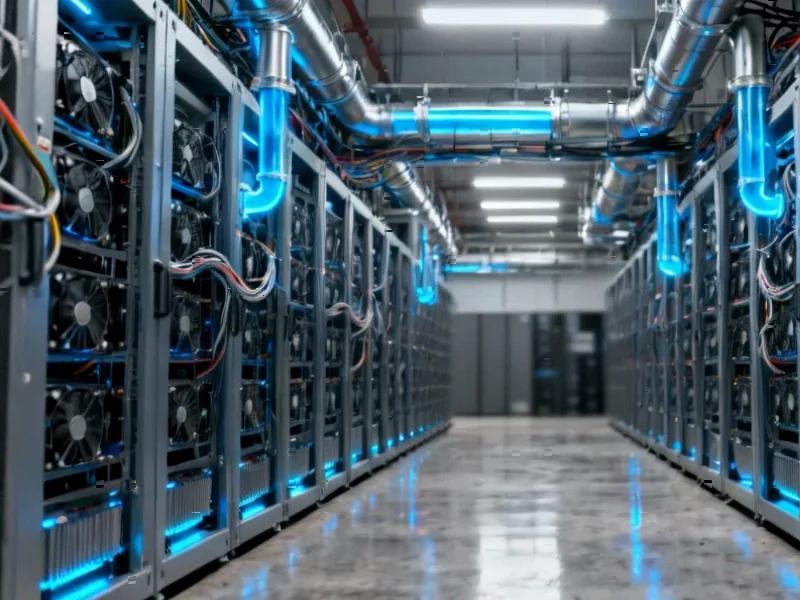According to DCD, Taiwan’s GPU Infrastructure-as-a-Service provider Zettabyte has successfully retrofitted Chief Telecom’s legacy data center into a direct-to-chip liquid cooling facility capable of hosting 100kW+ racks in just 45 days. The upgraded facility, previously designed for 20kW racks, is now Nvidia GB300 ready and represents the first milestone for Zettabyte Titan, the company’s flagship initiative to redefine next-generation AI infrastructure. Zettabyte chairman Kenneth Tai called the project “a blueprint for how the world’s data centers can adapt to the AI era,” while Chief Telecom CEO Johnny Liu emphasized the partnership’s unprecedented speed in transforming infrastructure. The upgrade comes as Chief Telecom’s Liyuan 2 (LY2) facility, launched in late 2024, offers 10-150kW per rack across 160,000 square feet and is expected to reach 80 percent occupancy by year-end. This rapid transformation signals a fundamental shift in how data center infrastructure is evolving to meet AI demands.
Table of Contents
The Liquid Cooling Imperative
The move to liquid cooling represents more than just a technical upgrade—it’s becoming a business necessity for AI infrastructure. Traditional air-cooled data centers hit physical limits around 20-30kW per rack, creating a bottleneck for the dense computational requirements of modern AI workloads. Direct-to-chip cooling, where liquid circulates directly over heat-generating components, enables five times the power density that this retrofit achieved. What’s particularly noteworthy is that Zettabyte accomplished this transformation on existing infrastructure rather than building from scratch, demonstrating that legacy facilities don’t necessarily need complete replacement to remain competitive. The 45-day timeline suggests they’ve developed standardized retrofit kits or modular systems that could be replicated across other facilities in Taiwan and throughout Asia.
Taiwan’s Strategic Position in AI Infrastructure
This upgrade positions Taiwan at the forefront of the global AI infrastructure race, leveraging its existing strengths in semiconductor manufacturing and technology supply chains. As home to TSMC, the world’s leading semiconductor foundry, Taiwan already plays a crucial role in manufacturing the advanced GPUs that power AI systems. Now, with companies like Zettabyte and Chief Telecom building the infrastructure to host these power-hungry systems, Taiwan is creating a complete AI ecosystem from chip production to computational deployment. The partnership with Wistron Corporation, though details remain sparse, suggests broader industry collaboration that could accelerate Taiwan’s transformation into an AI infrastructure hub serving both domestic and international markets.
Technical and Operational Challenges
While the 45-day retrofit is impressive, the real test comes in operational reliability and maintenance. Liquid-cooled systems introduce complexity that many data center operators aren’t experienced with—potential leakage risks, corrosion concerns, and the need for specialized maintenance staff. The transition from traditional radiator-based cooling systems to direct-to-chip solutions requires rethinking everything from facility layout to emergency procedures. Additionally, the power infrastructure upgrades needed to support 100kW+ racks extend beyond cooling—electrical distribution, backup power systems, and grid connectivity all require substantial investment that may not be immediately visible in this announcement.
Broader Market Implications
This rapid upgrade signals a coming wave of similar retrofits across Asia and globally, particularly in markets where new construction faces regulatory hurdles or space constraints. The ability to transform existing facilities rather than building new ones could dramatically accelerate AI infrastructure deployment timelines. For competitors, the 45-day benchmark sets a new expectation for transformation speed, potentially forcing other providers to develop their own rapid retrofit solutions. The involvement of BRV Capital and Lam Capital also indicates growing investor interest in infrastructure companies that can bridge the gap between legacy facilities and next-generation computational requirements.
The Sustainability Question
While the announcement mentions sustainability benefits, the actual environmental impact of liquid-cooled high-density computing remains complex. Liquid cooling typically reduces energy consumption for cooling by 30-50% compared to traditional air conditioning, but the overall power draw of 100kW racks is substantially higher than legacy systems. The net environmental benefit depends heavily on the energy source powering these facilities and the efficiency gains in computational performance. As Taiwan continues to develop its AI infrastructure, balancing computational density with sustainable energy sourcing will become increasingly critical for both regulatory compliance and market positioning.
Related Articles You May Find Interesting
- EE Tops UK Telecom Complaints in Broadband, Landline and Pay-TV
- TSMC’s $49B Bet on 1.4nm: The High-Stakes Race Beyond Moore’s Law
- Chipotle’s $43B Meltdown: When Perception Becomes Reality
- Why NetBird’s Self-Hosting Edge Could Reshape the VPN Market
- NVIDIA’s Cloud Gaming Gambit: RTX 5080 Servers and AAA Titles



